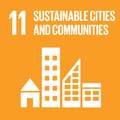Strava’s fitness app shares its data on urban cyclists’ behavior with city transportation departments in an effort to improve infrastructure for active transit.
Users upload more than 5 million bike rides and runs to the Strava fitness app every week. Through its data sharing service, Strava Metro, the company aggregates and anonymizes city-specific data and shares it with city planning and transportation departments. This data offers city officials unique insights into cyclists’ behavior, enabling cities to determine the best places for infrastructure improvements. Strava is working with more than 70 cities and organizations. The company’s data has been used, for example, to quantify how a new cycle way changed bicycling behavior on a new bike path in Queensland, Australia, and to illustrate the need for new bicycle infrastructure along a city corridor that was perceived to have no bike usage in Glasgow, Scotland.

Not only is ours a novel dataset, in many cases it’s the only dataset that speaks to the behaviour of cyclists and pedestrians in that city or region.
Michael Horvath, Co-Founderm Strava.
Why you should care
Cities around the world are becoming increasingly aware of the negative impact of cars and traffic congestion on well-being and productivity. Improving infrastructure options for pedestrians and cyclists is crucial in reducing private vehicle dependence and creating healthier cities. Strava Metro uses crowd-sourced data to help public officials understand the actual behavior of cycling commuters, so that cities can install useful and well-placed infrastructure.
How the Global Goals are addressed

Good Health and Well-Being
Better cycling and pedestrian planning and infrastructure will encourage more people in cities to commute by bike or on foot, increasing aggregate exercise levels and reducing obesity, heart disease and diabetes.

Sustainable Cities and Communities
Sharing urban cycling patterns allows cities to plan and build infrastructure that suits the needs of city users. Improving pedestrian-centric transport infrastructure can further increase cycling and walking in cities.

Partnerships for the Goals
This private-public partnership can help to accelerate the transition to healthier and more sustainable cities.


